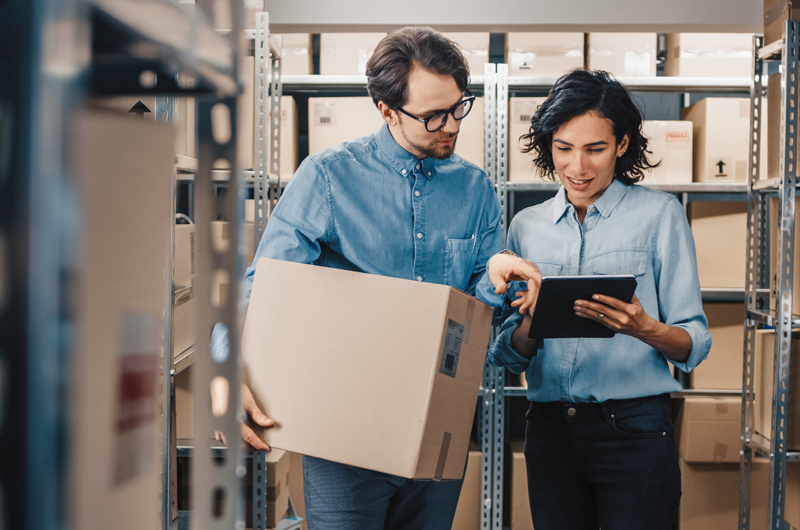We’ve all experienced customer self-service kiosks at our local grocery store checkout. Now, some retailers like Amazon are working to take that model to the next level with concept stores like Amazon Go. These stores allow customers to forego the register all together by enabling automatic checkout via RFID and mobile payment technologies. Other retailers are installing self-service kiosks that let customers more simply locate merchandise check prices, and order out-of-stock items. As self-service innovations improve, will they make retail employees obsolete?
Customer Self-service: Pros & Cons
Like anything, self-service in retail comes with benefits and drawbacks. Some of the advantages include:
- May reduce personnel costs for retailers.
- Can speed transaction time for customers buying only a few items.
- Contributes to a modern “look and feel” in stores.
- Empowers the customer to take control of their shopping trip.
Some downsides of retail self-service are:
- Can cause frustrations for customers when not working properly.
- May feel cold and impersonal.
- Allows more opportunities for theft of merchandise.
- Requires high upfront costs for retailers.
Customer Service Employees: Pros & Cons
Similarly, employing individuals to provide customer service in-store comes with its own set of pros and cons. Benefits of hiring retail employees to conduct customer service include:
- Can provide customized service based on the shopper and their specific needs.
- Able to troubleshoot issues and problem-solve in real time.
- Gives the shopping experience a feeling of warmth and personalization.
- Supports the local economy by providing jobs for people.
A few drawbacks of having employees handle all customer service involve:
- Providing training is an investment that can be costly when employees turn over frequently.
- Service may take longer compared to automated options.
- Customers may have difficulty tracking down the specific individual who can address their needs.
- Some people may not have a talent for providing customer service and that may reflect poorly on the brand.
Redefining Customer Service Roles
When determining whether or not to invest in retail self-service technology, it doesn’t have to be an all or nothing proposition. In many cases, self-service innovations can co-exist with customer service employees. In fact, a combination of the two might be an ideal solution for modern retailers.
Customer self-service technologies can free up retail employees from some of the more rote elements of their jobs. This will potentially provide them more time to offer focused, thoughtful service to shoppers. Additionally, offering a combination of service options empowers the customer to choose which works best for them on any given shopping trip. For example, if a customer is in a rush and just picking up one small item, the self-service checkout might be ideal. However, if they require a rain check for a case of a sale item that’s out of stock, standing in line for a human cashier may be worth the wait.
With online retail surging in popularity, brick-and-mortar shops can use customer service employees to differentiate themselves and attract customers into their stores. Though many people prefer the convenience of online shopping, there are still many instances when customers want to make purchases in-person. By making employees true product experts that offer unparalleled service to shoppers, customers will have an even greater incentive to visit physical stores.
In addition to spending on technology to improve service efficiency, smart retailers will invest in training to educate employees on how to really make a difference for customers. They will ensure that individuals working in their stores can provide customized assistance that will keep shoppers coming back for more.
Technology for Better Service
It’s clear that investing in innovation can improve retail self-service options. Technology can also enrich person-to-person customer service interactions. By equipping employees with the right tools, they can provide customers with better, more personalized assistance.
Communication Applications
The ability for employees to simply connect with coworkers and supervisors across the store can improve and speed customer service. Team communication apps like Zello can help streamline communication for retailers. Some of these apps can run on existing equipment (like network radios, walkie-talkies, and scanners) if a device upgrade isn’t part of your budget. They can also run on modern systems like Apple and Android phones and tablets.
Communication apps like Zello offer a number of helpful features for retail environments, such as:
- The capacity to tell which colleagues are currently online and available
- Location tracking for all employees
- Message recording, so employees will never miss a communication
- Message archiving
- Simplified operation with push-to-talk
- The capability to send an emergency alerts if urgent help is required
- A central management console to customize functionality
When combined, these features allow retail employees to improve and speed customer service. They can respond more quickly to customer inquiries by engaging colleagues at the touch of a button. Communication apps also build community and improve workplace morale by ensuring employees are connected and able to work together as a team.
Tablets and Smartphones
In order to make employees total product experts who can deliver a level of information otherwise only available online, some retailers are equipping workers with devices like smartphones and tablets that offer online or internal network connectivity. Armed with these tools, employees can look up any information they need to know on the spot, including:
- Product materials
- Product dimensions
- Customization options
- Stock availability in-store, at a warehouse, or at other locations
- Competitor pricing
- Customer reviews and feedback
- Supplemental items for upsell opportunities
With a breadth of product details at their fingertips, customer-serving employees can provide a new level of value to shoppers. Not only will they be able to address customer inquiries more quickly, accurately, and thoroughly, but they will be furnished with data to help make sales (and even to upsell when relevant).
New technology also contributes to a more modern aesthetic for retailers. Traditionally bulky radios and scanners clipped to the back of employees makes them look dated and out of touch. Additionally, this old equipment can only accomplish a fraction of the functions of today’s smart devices. Adoption of smartphones and tablets for store employees is growing across the retail space for these reasons.
Roving Checkout Options
Nobody likes to wait in long checkout lines. Even with self-service, the entire checkout process can be frustrating, as technology malfunctions and leaves you waiting for a sales associate to come remedy the issue. Scanners that enable employees to complete the checkout process on the sales floor provide a much more pleasant experience for customers.
Many companies are investing in mobile scanners or accessories for smartphones and tablets that allow workers to handle checkout on the sales floor. For example, the Apple Store has no register bank; employees on the shop floor handle all payment transactions. Allowing instantaneous checkout opportunities decreases the potential for shoppers to abandon items and the store all-together because of the daunting length of the register line. These mobile payment technologies help increase sales and customer satisfaction.
Is self-service making retail service employees obsolete? No! In fact, self-service innovations allow retail workers to conduct more thoughtful and meaningful customer interactions by eliminating some of the more mundane aspects of their jobs. Investing in technology tools for service employees can further empower them to provide the type of service that customers value.


